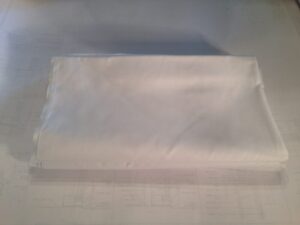 In every workplace, from call centers and stores to schools and hospitals, quality cleaning is an essential expense.
In every workplace, from call centers and stores to schools and hospitals, quality cleaning is an essential expense.
In the past 20 years or so, microfiber has proven to be one of the most efficient materials in the cleaning sector. Microfiber is a synthetic fiber, thinner than a strand of silk and around one-fifth the diameter of a single strand of human hair. Most microfibers are made of polyesters and polyamides, or a blend.
As anyone who has switched to microfiber mops, microfiber cloths, and microfiber towels will know, the results speak for themselves. During an experimental trial, a busy medical center found that using microfiber mops resulted in:
- 20 percent daily savings on cleaning labor
- 60 percent lifetime cost-reductions on mops
- 95 percent drop in cleaning-chemical expenses
Microfiber is a cost-effective, time-saving solution. However, where did it come from and what other uses does it offer beyond cleaning?
Here at Texas Microfiber, we decided to take a look back at its fascinating origins and wide variety of applications.
The First Microfibers
Towards the end of the 1950s, various spinning techniques were employed in the quest to produce ultra-fine fibers (thinner than 0.7 denier). At this time, experiments resulted in pieces of random lengths, and so the first real success occurred in 1960s Japan.
Dr Miyoshi Okamoto and Dro Toyohiko Hikota worked to further this, and eventually found microfibers suitable for industrial usage. Ultrasuede was one of the original success stories, and reached the market in the following decade. This lead to an explosion in microfiber’s worth within the textile sector.
Microfiber’s Diverse Applications
While microfiber has proven incredibly effective in cleaning applications, it is also used widely in other areas.
Domestic:
Tablecloths, furniture, and car upholstery made with microfiber have been shown to repel stains effectively. Alcoholic drinks, a pain to wash out of other materials, will bead on microfiber until wiped away later.
Elsewhere, microfiber towels dry wet skin faster, dry quicker after use, and take longer to develop a stale feel when left wet.
Sport:
For one season, the NBA switched to microfiber basketballs over leather ones. While players ultimately found their bounce a little too difference, the balls nevertheless remained drier than leather alternatives as players perspired during games. This leads to less risk of slippage and mistakes.
Many athletic clothing products, such as cycling and running gear, is made with microfiber, as it absorbs moisture from the body to enhance comfort and regulate temperature.
Everyday Essentials:
Microfiber also tends to be used in many other products we use on a daily basis, such as face mitts and loft insulation. As microfiber remains softer and holds its shape better than other materials, it is also ideal for clothing.
Are you looking to introduce microfiber mops, microfiber cloths, and microfiber towels to your workplace? No matter what the application, Texas Microfiber can help you find the solutions you need.

Comments are closed